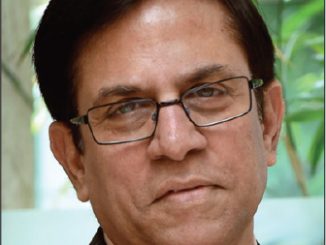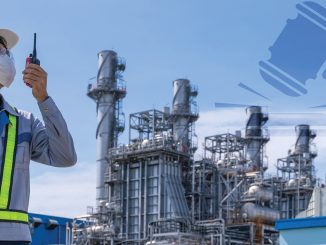 Vibrant Energy is a pure-play commercial and industrial (C&I) renewable energy-focused IPP. Vibrant’s strategic focus has meant that it has steered clear of the utility-scale and rooftop segments. Vibrant’s portfolio predominantly comprises offsite open access projects mostly in the captive mode. A more recent order pipeline has been for hybrid projects with high renewable energy penetration and for providing near-round-the-clock (RTC) power to captive and third-party clients. Vibrant Energy received a major fillip in 2021 when the Macquarie Group acquired a 67 per cent stake in the platform. Headquartered in Singapore and Hyderabad, Vibrant Energy has over 1.7 GW of assets under management including under-construction assets and secured green power contracts. In one year, it aims to achieve a 1 GW operating portfolio. In an interview with Power Line, Vinay Pabba, Chief Operating Officer, Vibrant Energy, shares the key details on the recent developments of the organisation and his views on the renewable energy sector. Edited excerpts…
Vibrant Energy is a pure-play commercial and industrial (C&I) renewable energy-focused IPP. Vibrant’s strategic focus has meant that it has steered clear of the utility-scale and rooftop segments. Vibrant’s portfolio predominantly comprises offsite open access projects mostly in the captive mode. A more recent order pipeline has been for hybrid projects with high renewable energy penetration and for providing near-round-the-clock (RTC) power to captive and third-party clients. Vibrant Energy received a major fillip in 2021 when the Macquarie Group acquired a 67 per cent stake in the platform. Headquartered in Singapore and Hyderabad, Vibrant Energy has over 1.7 GW of assets under management including under-construction assets and secured green power contracts. In one year, it aims to achieve a 1 GW operating portfolio. In an interview with Power Line, Vinay Pabba, Chief Operating Officer, Vibrant Energy, shares the key details on the recent developments of the organisation and his views on the renewable energy sector. Edited excerpts…
What are the key recent developments of the organisation?
In December 2022, Amazon announced its first wind-solar hybrid project with Vibrant Energy to be located in India. These two projects represent a total of 300 MW of renewable energy capacity and will be based in Madhya Pradesh and Karnataka. After becoming operational, these projects are expected to generate 1,163,000 MWh of clean energy. Amazon will pay us a flat tariff under a power purchase agreement (PPA). These two hybrid projects will be co-located. Apart from Amazon, Sify, a major data centre owner, has also been a key client. Data centres will be a key driver for the C&I segment going forward. In addition, we have received interest from industries in hard-to-abate sectors like textiles, steel and cement.
Vibrant has also recently obtained an energy trading licence from the Central Electricity Regulatory Commission. We feel that going forward C&I customers will buy a significant share of their electricity requirements from the green power markets and may not entirely rely on bilateral PPAs. Market purchase under novel contract structures (like VPPAs) will see increasing growth given the favourable policy push to promote open access, especially with the enactment of the green energy open access rules. In particular, reducing the threshold for open access from 1 MW to 100 kW (for green power purchase) is a big positive and can significantly transform the demand side of the green open access segment.
What has been your experience with the recently launched open access portal?
The intent of the portal is clear – to provide transparency in the entire open access process, from application to approval. Traditionally, this space has been a black box lacking transparency given the adversarial relationship between discoms and open access consumers/ generators. If an application gets rejected, the applicants have to be given a genuine reason for it. There is a provision for deemed approval, which may be helpful to the applicants.
Apart from the launch of the open access portal, which is indeed helpful, I would like to see more state regulations getting aligned with the green energy open access rules. Not many states have done this except for a few like Punjab. It is important that the intent of freeing up the green open access market enshrined in the green open access rules is actually implemented by the state governments in letter and spirit.
Which states are favourable for the open access of renewables?
Open access regulations change almost every year across states, which changes the attractiveness of the states from time to time. We are active in Maharashtra, Andhra Pradesh and Telangana. Our future plans will be in resource-rich states like Rajasthan, Gujarat and Karnataka. Going forward, we believe that we will develop a pan-Indian customer base with concentrated generation resources. Extension of the ISTS exemption to C&I projects makes this feasible. The ISTS exemption for C&I projects is a great enabler, which can transform the C&I segment in a very fundamental fashion.
What have been the key innovations in the business model for the C&I segment?
The requirements of customers have become more complex. Customers today want power that is affordable and green. They expect their near-RTC demands to be met by a combination of generation sources. This requires innovative design in project formats and offtake profiles. Solar and wind hybrids sometimes in combination with storage seems to be the answer to meet this customer requirement. Other customers with more advanced and sophisticated requirements are also seeking generation profiles that “follow” their loads.
Regarding VPPAs, where a strike price is contracted between the generator and the offtaker with the physical delivery of power on the exchange, is still not permitted under the existing legislation. There is a need to make suitable amendments in the Securities Contracts (Regulation) Act, 1956 and the CERC Regulations to make VPPAs legitimate and feasible.
Also, there are customers who are only interested in buying the green attribute and are willing to fund a renewable energy project. From these projects, the “brown” electricity can be sold separately to different customers.
What is your view on the deviation settlement mechanism and forecasting and scheduling regulations?
Every developer would like to avoid a high penal regime. However, we should acknowledge the privileges the renewable energy industry gets in India especially with regard to “must-run” status. As renewable energy is intermittent, DSM regulations are needed to ensure grid discipline. These regulations will assist innovation in the sector around accurate power and demand forecasting of renewables. However, the jump from the old to the new regulation has been quite drastic and the industry should have been given more time to prepare themselves for a narrower tolerance band and a more stringent penal regime.
What are the key challenges for developers in the C&I space?
A key challenge is to formulate PPAs according to customer requirements. On the execution side, C&I projects now face challenges similar to utility-scale projects given the increasing size of these projects. In the C&I space as well, projects of 100-150 MW are being developed. The C&I segment also contributes to a significant installed renewable energy capacity. In financial year ending March 2023, 13-14 GW of solar capacity will be added. Of this, 3.5-4 GW will be in the C&I space. The installed capacity of the C&I segment is expected to touch 45-50 GW in three years.
While the intention is right to promote domestic manufacturing, a non-tariff barrier in the form of the Approved List of Models and Manufacturers (ALMM) poses challenges to perhaps all renewable energy developers in India. High tariffs are forcing developers to explore compliant tax optimising models like project imports/FTAs etc. The government has been shutting these options one by one. I think a large management bandwidth is getting wasted in the process. We should be out building projects and adding capacities and making the green transition happen. The supply chain constraints along with these barriers are not helping the cause.
For a few years the availability of modules is expected to be a challenge. Despite these challenges, a key positive is that solar cell prices are now softening, which will make solar modules cheaper.
What will be the future plans of Vibrant Energy?
Going forward, we are working on providing RTC sustainable power to our clients to match their load profiles during the day or across the year. Adding storage to our projects will be the next key plan. However, this will be a key challenge as storage projects require scale, which utility-scale developers are able to leverage. Going forward, intra-state projects will take a back seat at least till the transmission charge waiver on interstate projects expires in June 2025.
What will be your policy suggestions to the government?
The industry needs a breather from tariff and non-tariff barriers. There is a need to defer duty hikes on solar imports and expand the ALMM to include foreign suppliers. Project developers need a 2-3 year runway before the domestic manufacturing ecosystem can ramp up.
Even though the domestic manufacturing capacity is increasing, much of it is being exported to the US and Europe. Furthermore, more regulatory clarity is needed on how business models for C&I projects will work under the ISTS network. In addition, legislative changes to make contracts for difference and VPPA contracts possible will help the industry.



